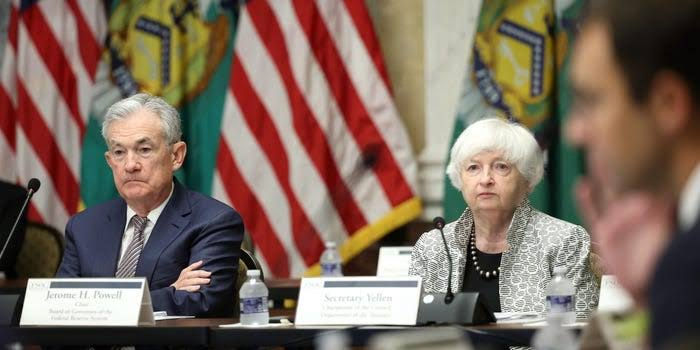An Analysis of Japan’s Price Indices and Economic Situation
- Cuneyt Tuncer
- 24 Kas 2024
- 4 dakikada okunur

1. Observations on Japan’s Producer Price Index (PPI) and Core Consumer Price Index (CPI)
Figure 1 illustrates the long-term trends of Japan’s Producer Price Index (PPI) and Core Consumer Price Index (CPI). Post-2020, the PPI has shown a faster increase compared to the CPI. This suggests that the rise in producer costs has not been fully passed on to consumer prices, indicating that firms have been forced to absorb these increasing costs. Following the pandemic, rising costs have posed challenges for the Bank of Japan (BOJ) in its monetary policy. However, expansionary policies have been maintained to keep inflation at target levels. The widening gap between the PPI and CPI indicates that firms are not fully passing on these costs to consumers, and combined with weak consumer demand, this could increase the risk of deflationary pressures.
Figure 1

2. The Impact of Producer Prices on Consumer Prices and the PPI/CPI Ratio
Figure 2 shows the ratio between Japan’s Consumer Price Index (CPI) and Producer Price Index (PPI). This ratio allows us to analyze how producer prices are reflected in consumer prices and how the relationship between these two indices has evolved over time. The decline in the ratio post-2020 indicates that increases in producer prices have not been fully reflected in consumer prices or that consumer prices have risen more slowly compared to producer prices. The producer price index reflects changes in production costs, but the pass-through of these changes to consumer prices has been incomplete, possibly due to weak aggregate demand conditions or firms’ reluctance to pass on costs to consumers. This situation could be associated with low inflation pressures and weak consumer demand.
Figure 2

3. Weak Aggregate Demand and Deflation Risk
In recent years, weak aggregate demand conditions have been observed in Japan. This weakness makes it difficult to fully pass the increase in producer prices onto consumer prices. In particular, the slow recovery of consumer spending and weak consumer confidence during the post-pandemic recovery period explain this situation. If producer prices are not consistently reflected in consumer prices, this could create deflationary pressures in the long term and negatively impact Japan’s economic growth.
4. Japan’s Interest Rates and Economic Situation
Figure 3 depicts the annual changes in Japan’s Producer Price Index (PPI), Services Producer Price Index (SPPI), Base Discount Rate, and Base Lending Rate. The interest rates applied by the Bank of Japan (BOJ) to banks have consistently declined since the 1990s. This decline is a result of the loose monetary policies implemented by Japan in its fight against deflation. The reduction of interest rates to near-zero levels is seen as a broad policy aimed at stimulating economic growth. The data presented in the graph is a valuable resource for understanding the transformation Japan’s economy has undergone over the past three decades and how the central bank has responded to this transformation.
Figure 3

5. Exchange Rate Movements and Their Impact on Japan’s Economy
Figure 4 presents Japan’s US Dollar/Yen Spot Rate and Real Effective Exchange Rate (REER). From 1980 to 2024, the Japanese Yen has experienced significant depreciation against the US Dollar. In recent years, the USD/JPY exchange rate has risen above the 150 level, indicating a substantial weakening of the Yen. A high USD/JPY rate could make Japan’s exports more competitive but might also increase import costs, fueling domestic inflation. The declining REER suggests that Japan has struggled to maintain its competitiveness in international trade, potentially negatively affecting Japan’s economic growth potential.
Figure 4

6. BOJ’s Interest Rate Hikes and Their Impact on Investors
Figure 5 shows that the BOJ ended its long-standing negative interest rate policy in March 2024, raising interest rates to a range of 0-0.1%, and subsequently increased the rate to 0.25% in July 2024. This rate hike could be interpreted as a sign of Japan’s economic recovery and sustained inflation. The increase in interest rates could be positive news for investors, particularly those investing in fixed-income securities, as bond yields may rise, attracting domestic and foreign investors to Japanese bonds. However, higher borrowing costs for indebted companies could narrow profit margins, exerting pressure on stock prices. Investors need to closely monitor whether the BOJ will continue with further rate hikes and how this will resonate in the markets.
Figure 5

7. Japan’s Current Account and Financial Account Balances
Figures 6 and 7 present Japan’s current account/net balance and financial account/net balance indicators. The current account balance includes Japan’s trade balance, service trade, investment income, and official transfers. Since the early 2000s, the current account balance has generally shown a positive trend, with fluctuations during global financial crises and notably during the 2020 pandemic. The fluctuations in the financial account reflect Japan’s net flows related to foreign assets and liabilities, with significant volatility observed, particularly after 2010. The global financial market uncertainties have impacted Japan’s financial account balance, highlighting how Japan is perceived by international investors and the movements in external financial markets.
Figure 6

Figure 7

Conclusion
Japan’s economic situation has experienced significant fluctuations concerning price indices, interest rates, and exchange rate movements. The incomplete pass-through of producer price increases to consumer prices increases the risk of deflationary pressures amid weak aggregate demand. The BOJ’s interest rate hikes mark a critical turning point for Japan’s economic recovery, though the long-term effects require careful monitoring. The current account and financial account balances also reflect Japan’s sensitivity to global economic conditions, indicating that future economic policy decisions will be crucial in determining their impact on Japan’s economy.
Donation >>>>>>>https://www.cuneyttuncer.com/team



Comments